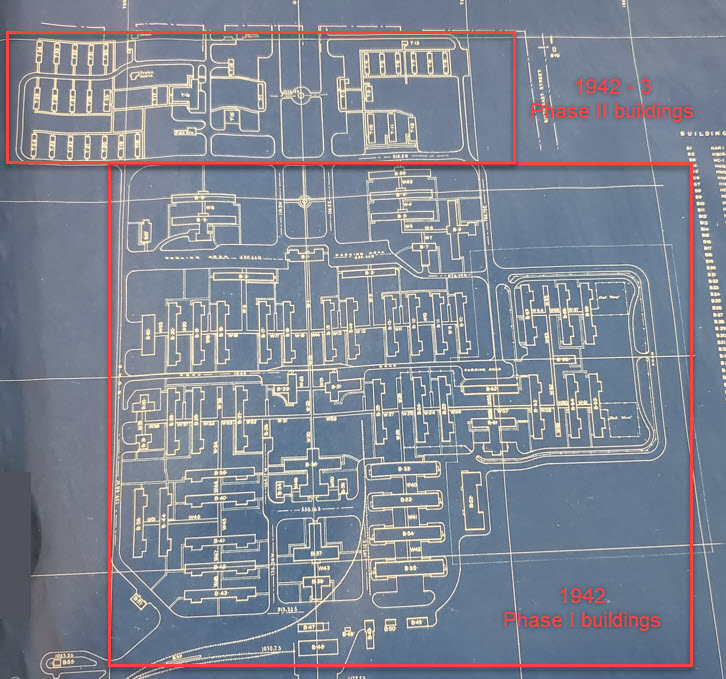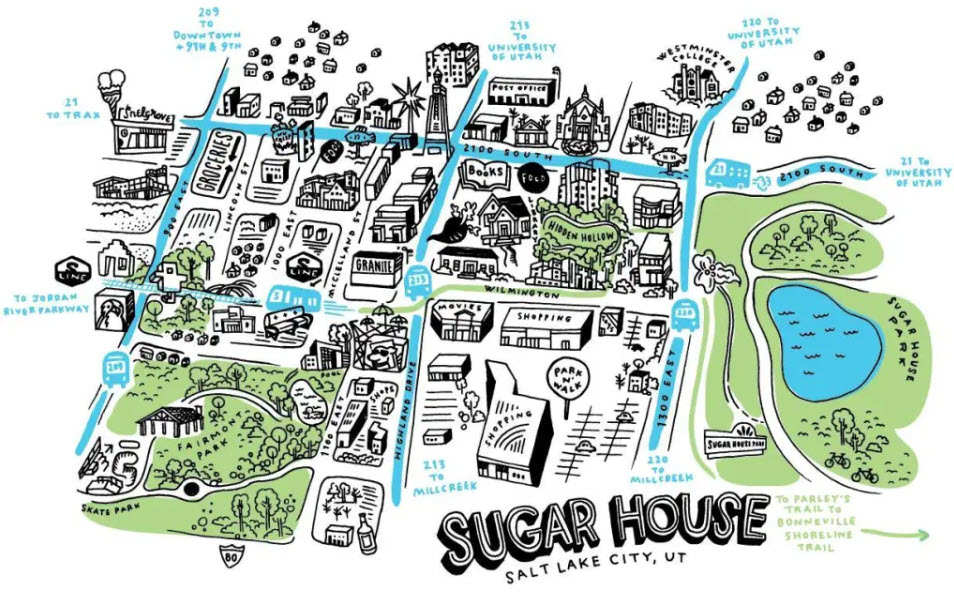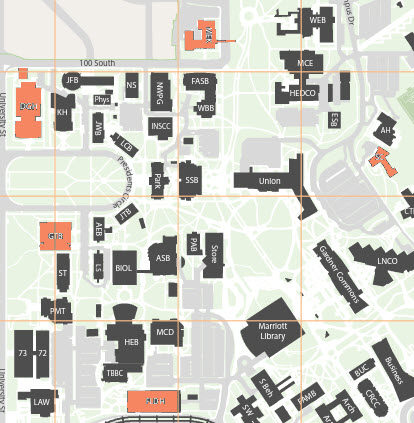Bushnell Hospital
In January 1942, the Army War department recommended Brigham City, UT as the site for a 1000-bed (eventually increased to 1500-bed) mobilization hospital to serve wounded WWII veterans. It was centrally located to serve those from the western states, so their friends and family could easily visit. Ten months later the hospital accepted their first patient, and the site was essentially complete by December 1942. Most large-scale war mobilization facilities were planned to be temporary with a 5 - 20 year lifespan. However, from the beginning, Bushnell Hospital was meant to be permanent and most buildings were built of brick.
The Office of the Quartermaster General (US Army) created standard plans for most of the buildings, and Ashton, Evans & Hodgson realized these plans for Phase I (1942), Phase II (1942-3), and additional work through 1945.
Country Club
Country Club Acres was created in 1926 as an exclusive subdivision in Salt Lake City. When the Salt Lake Country Club had just moved from its original site to the undeveloped rural East Bench, the Ashley-Jenkins construction company seized the opportunity to develop a new "Country Club community of homes" near the golf course. Large advertisements explaining the meaning of a "Country Club district" touted the subdivision as an "exceptionally high-class residential area." The Great Depression and World War II slowed development and Country Club Acres was not fully developed until the 1950s.
Ashton & Evans built four high-end homes (and designed an addition to another) in the area from 1930 - 1946.
Sugar House
The Sugar House (colloquially Sugarhouse) neighborhood was established in 1853, only six years after the Latter-day Saints entered the Salt Lake valley. The name was derived from an early sugar beet factory in the area. It was initially primarily a residential area but by the 1930s a large commercial hub had developed and continued to grow to the present day.
Nearly all the Ashton & Evans Sugar House designs were commercial and public buildings: everything from Mountain States Telephone & Telegraph to Redman Movies & Storage to Sugar House (Sprague) library to a variety of retail outlets.
University of Utah
A&E/AEB received design commissions on the University main campus from 1928 (Student Union Building) to 1953 (Sterling Sill Family Living Center and Kennecott Copper Research Center). While most of these buildings are still standing and in exceptional condition, one of their most famous structures, Carlson Hall (1937, A&E), was listed on the National Register of Historic Places but demolished in 1996 to make way for the new law school.
In addition to design commissions, A&E did a variety of addition and alteration work over the years.
University of Utah Health Sciences Campus
AEB received design commissions for the first three buildings on the University Health Sciences campus soon after its purchase from Fort Douglas: the Cancer Research Center (1951); Rehabilitation Center (1960); and the Medical Center (1959 - 1965). The photo outlines those building in the context of the much expanded Health Sciences Campus, 1978.
Yalecrest
Yalecrest Historic District is a residential neighborhood located on the East Bench of Salt Lake City (bounded by Sunnyside on the north, 1900 E, 1300 S, and 1300 E). The district is visually cohesive with the majority of the houses built in subdivisions of period revival-style cottages in the 1920s and 1930s.
Ashton, and then Ashton & Evans, designed many homes beginning with the George Albert Smith home at 1302 Yale (1913, Ashton, National Register of Historic Places) and continuing through the 1920s and 1930s. In addition to homes, A&E also designed the Yalecrest Ward (1936). Many of the A&E structures are identified as Contributing Sites in the Yalecrest Historic District! During the 1940s, A&E continued Yalecrest work with additions and alterations as the second generation of homeowners arrived.






